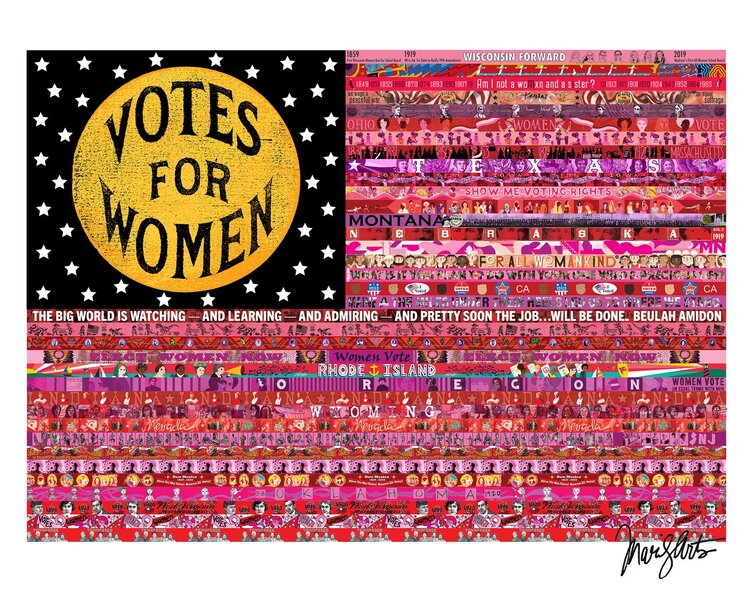Exhibition with VIDEO: the New York Society Library: Women Get the Vote: A Historic Look at the Nineteenth Amendment
The New York Society Library presented a new exhibit on women’s suffrage called “Women Get the Vote: A Historic Look at the Nineteenth Amendment.” On this page, find a rundown of the opening reception with photos of the exhibit, the cartoon postcards, the model for the proposed Central Park monument depicting Susan B. Anthony and Elizabeth Cady Stanton, and a video and text of Brooke Kroeger’s remarks at the event. The exhibition runs through August. (Note that in Washington, DC, the National Portrait Gallery exhibition, “Votes for Women: A Portrait in Persistence,” opens March 29, 2019, and runs through January 5, 2020.)
The library’s website explains the exhibit:
In Women Get the Vote, selections from the Library’s holdings bring to light the literature from a social and political revolution that reverberates down to the present day. Books, archival materials, and rare treasures on display include the early suffragist publication Votes for Women Broadside; Mary Wollstonecraft’s 1792 A Vindication of the Rights of Woman, and the 1882 edition of History of Woman Suffrage, edited by Elizabeth Cady Stanton, Susan B. Anthony, and Matilda Joslyn Gage. Also featured are biographies of Alice Paul, the British suffragist Emmeline Pankhurst, and legendary abolitionists Frederick Douglass and Sojourner Truth.
Women Get the Vote also showcases the activities of two Library members engaged in the struggle: Mrs. John Winters Brannan, the daughter of newspaper editor Charles A. Dana, who was sentenced to imprisonment at the Occoquan Workhouse in Lorton, Virginia for picketing the White House, and Rosalie Gardiner Jones, known for her fiery views on women’s rights.
The library scheduled a number of events related to the suffrage exhibit:
For more information on the exhibit and how to see it, visit the New York Society Library website. The exhibition is open to the public whenever the library is open.

